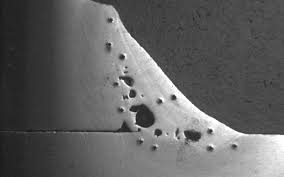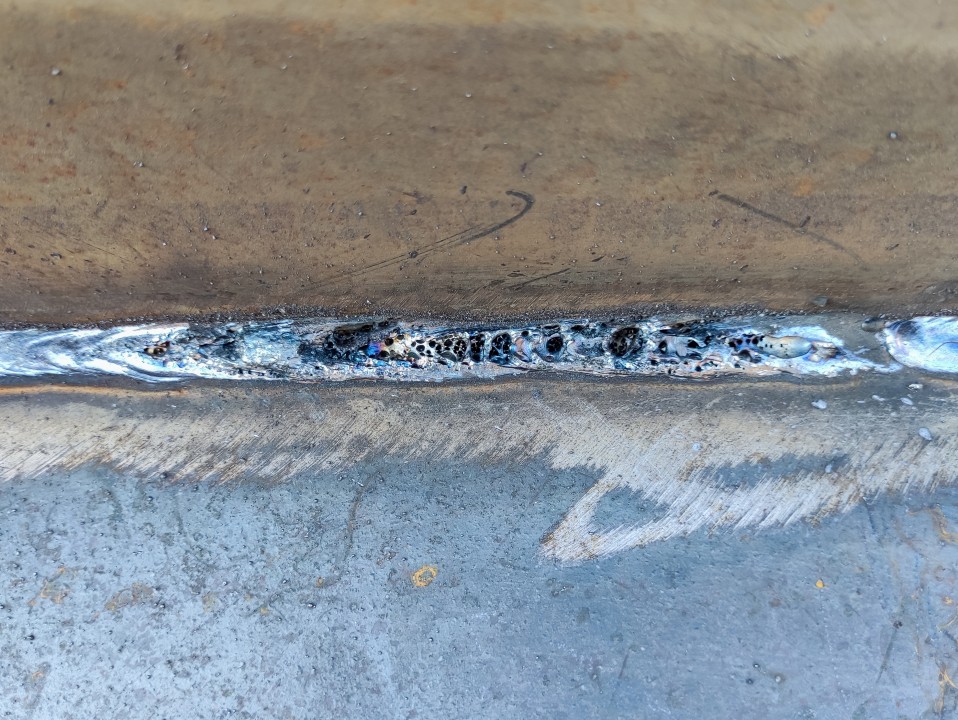How to Determine What is Porosity in Welding and Improve Your Technique
How to Determine What is Porosity in Welding and Improve Your Technique
Blog Article
The Science Behind Porosity: A Comprehensive Overview for Welders and Fabricators
Comprehending the complex mechanisms behind porosity in welding is essential for welders and makers making every effort for flawless craftsmanship. As metalworkers explore the midsts of this phenomenon, they reveal a world governed by numerous variables that influence the formation of these minuscule spaces within welds. From the composition of the base materials to the complexities of the welding process itself, a wide variety of variables conspire to either aggravate or ease the visibility of porosity. In this extensive guide, we will certainly untangle the science behind porosity, exploring its impacts on weld high quality and unveiling advanced methods for its control. Join us on this trip via the microcosm of welding imperfections, where precision satisfies understanding in the quest of flawless welds.
Comprehending Porosity in Welding
FIRST SENTENCE:
Evaluation of porosity in welding reveals vital understandings right into the integrity and quality of the weld joint. Porosity, identified by the presence of cavities or voids within the weld metal, is a common concern in welding procedures. These voids, if not effectively resolved, can compromise the structural integrity and mechanical properties of the weld, leading to prospective failures in the finished item.

To discover and measure porosity, non-destructive testing methods such as ultrasonic screening or X-ray inspection are commonly utilized. These strategies permit the identification of inner defects without compromising the honesty of the weld. By analyzing the dimension, form, and distribution of porosity within a weld, welders can make informed choices to boost their welding procedures and accomplish sounder weld joints.

Elements Affecting Porosity Formation
The occurrence of porosity in welding is influenced by a myriad of factors, varying from gas shielding performance to the ins and outs of welding specification setups. One crucial aspect adding to porosity formation is inadequate gas protecting. When the shielding gas, commonly argon or carbon dioxide, is not properly covering the weld swimming pool, atmospheric gases like oxygen and nitrogen can pollute the liquified steel, bring about porosity. Additionally, the tidiness of the base materials plays a considerable role. Impurities such as corrosion, oil, or moisture can vaporize throughout welding, developing gas pockets within the weld. Welding parameters, consisting of voltage, current, travel rate, and electrode type, additionally influence porosity formation. Using inappropriate settings can produce excessive spatter or warm input, which subsequently can lead to porosity. The welding strategy employed, such as gas metal arc welding (GMAW) or protected metal arc welding (SMAW), can affect porosity formation due to variants in warm circulation and gas insurance coverage. Comprehending and managing these variables are necessary for decreasing porosity in welding procedures.
Results of Porosity on Weld High Quality
The presence of porosity additionally weakens the weld's resistance to rust, as the trapped air or gases within the spaces can react with the surrounding environment, leading to degradation over time. Furthermore, porosity can impede the weld's capacity to withstand pressure or influence, more threatening the general quality and reliability of the welded structure. In critical applications such as aerospace, auto, or architectural constructions, where safety and longevity are extremely important, the detrimental results of porosity on weld high quality can have severe effects, emphasizing the significance of lessening porosity through appropriate welding techniques and treatments.
Techniques to Decrease Porosity
Additionally, using the proper welding criteria, such as the correct voltage, present, and travel speed, is essential in avoiding porosity. Preserving a consistent arc size and angle throughout welding additionally aids reduce the chance of porosity.

Making use of the suitable welding method, such as explanation back-stepping or using a weaving activity, can additionally aid disperse warmth uniformly and decrease the possibilities of porosity development. By applying these methods, welders can properly minimize porosity and produce top quality welded joints.

Advanced Solutions for Porosity Control
Implementing sophisticated web technologies and innovative techniques plays a pivotal duty in attaining premium control over porosity in welding procedures. In addition, utilizing innovative welding strategies such as pulsed MIG welding or customized ambience welding can also help minimize porosity problems.
One more sophisticated solution entails making use of sophisticated welding devices. As an example, using equipment with built-in functions like waveform control and sophisticated source of power can enhance weld quality and minimize porosity dangers. In addition, the execution of automated welding systems with exact control over parameters can substantially minimize porosity defects.
In addition, integrating innovative monitoring and inspection innovations such as real-time X-ray imaging or automated ultrasonic screening can help in spotting porosity early in the welding procedure, permitting instant rehabilitative actions. On the whole, incorporating these innovative solutions can considerably boost porosity control and enhance the general top quality of welded components.
Conclusion
In conclusion, understanding the scientific research behind porosity in welding is important for welders and makers to generate high-quality welds. By recognizing the elements affecting porosity formation and implementing techniques to minimize it, welders can improve the total you could check here weld high quality. Advanced solutions for porosity control can even more improve the welding process and ensure a strong and dependable weld. It is necessary for welders to constantly enlighten themselves on porosity and apply best practices to attain optimum results.
Report this page